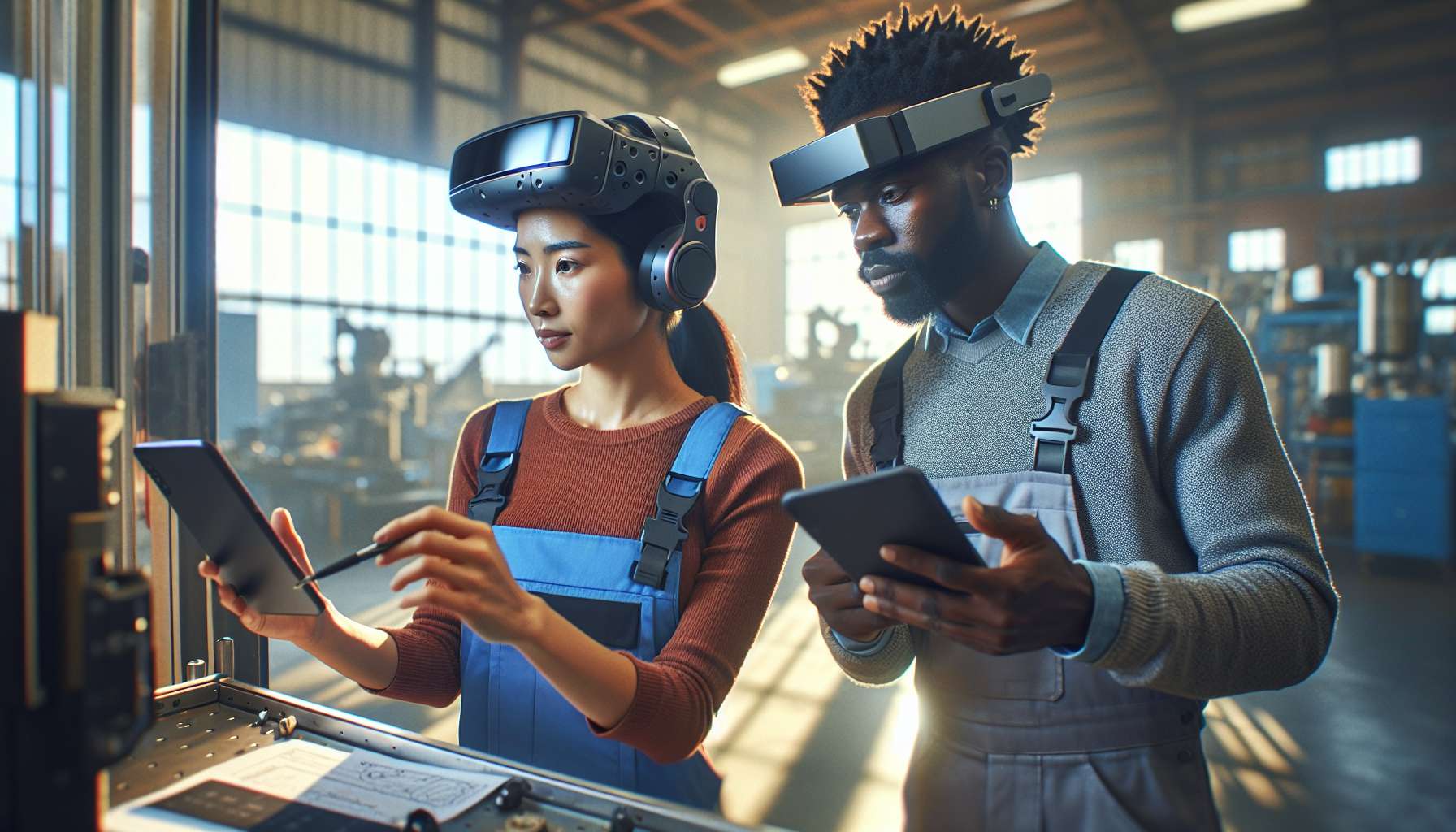Revolutionizing Manufacturing: The Top 10 Benefits of AR
Augmented Reality (AR) has emerged as a game-changer in various industries, and manufacturing is no exception. By blending the physical and digital worlds, AR has the power to transform manufacturing processes, enhancing efficiency and productivity like never before. In this article, we will explore the top 10 benefits of AR in manufacturing, shedding light on the immense potential it holds for businesses in this sector.
1. Streamlined Assembly and Training
- AR overlays digital instructions onto real-world objects, guiding workers through complex assembly processes.
- Training new employees becomes more efficient as AR provides interactive and immersive learning experiences.
2. Enhanced Quality Control
- AR enables real-time monitoring and inspection of manufacturing processes, reducing the risk of errors and defects.
- By overlaying digital information onto physical objects, AR assists in identifying and rectifying quality issues promptly.
3. Improved Maintenance and Repairs
- AR empowers technicians with step-by-step visual instructions, reducing downtime and improving the accuracy of repairs.
- Remote assistance through AR allows experts to guide on-site technicians, minimizing travel costs and time delays.
4. Efficient Inventory Management
- AR simplifies inventory tracking by providing real-time information on stock levels, locations, and reorder points.
- Workers can use AR to quickly locate and retrieve items, optimizing warehouse operations and minimizing errors.
5. Optimal Workplace Safety
- AR enhances safety by overlaying digital warnings and instructions onto hazardous equipment or environments.
- Workers can receive real-time alerts and guidance, reducing the risk of accidents and injuries.
6. Efficient Equipment Maintenance
- AR facilitates predictive maintenance by monitoring equipment performance and providing real-time data on potential issues.
- Technicians can proactively address maintenance needs, preventing costly breakdowns and optimizing equipment lifespan.
7. Accelerated Design and Prototyping
- AR enables designers to visualize and manipulate 3D models in real-world environments, expediting the design process.
- Prototyping becomes more efficient as AR allows for virtual testing and evaluation, reducing time and material costs.
8. Remote Collaboration
- AR connects teams across different locations, enabling real-time collaboration on design, troubleshooting, and decision-making.
- Experts can remotely assist and guide on-site workers, fostering knowledge sharing and reducing travel expenses.
9. Increased Productivity
- AR eliminates the need for manual data entry by providing workers with real-time access to information and instructions.
- By reducing errors and streamlining processes, AR significantly boosts overall productivity in manufacturing operations.
10. Enhanced Customer Experience
- AR allows customers to visualize and interact with products before purchase, improving decision-making and satisfaction.
- Product manuals and support can be delivered through AR, enhancing post-purchase experiences and reducing support costs.
As we can see, the benefits of AR in manufacturing are vast and transformative. By leveraging this technology, businesses can unlock new levels of efficiency, productivity, and customer satisfaction. Embracing AR in manufacturing today is not just a competitive advantage; it is a necessity for staying ahead in the rapidly evolving industrial landscape.





